Enterprise Industries produces Fresh a brand of liquid laund
Enterprise Industries produces Fresh, a brand of liquid laundry detergent. In order to manage its inventory more effectively and make revenue projections, the company would like to better predict demand for Fresh. To develop a prediction model, the company has gathered data concerning demand for Fresh over the last 30 sales periods (each sales period is defined to be a four-week period). The demand data are presented in table concerning y (demand for Fresh liquid laundry detergent), (the price of Fresh), (the average industry price of competitors\' similar detergents), and (Enterprise Industries’ advertising expenditure for Fresh). To ultimately increase the demand for Fresh, Enterprise Industries’ marketing department is comparing the effectiveness of three different advertising campaigns. These campaigns are denoted as campaigns A, B, and C. Campaign A consists entirely of television commercials, campaign B consists of a balanced mixture of television and radio commercials, and campaign C consists of a balanced mixture of television, radio, newspaper, and magazine ads. To conduct the study, Enterprise Industries has randomly selected one advertising campaign to be used in each of the 30 sales periods in table below. Although logic would indicate that each of campaigns A, B, and C should be used in 10 of the 30 sales periods, Enterprise Industries has made previous commitments to the advertising media involved in the study. As a result, campaigns A, B, and C were randomly assigned to, respectively, 9, 11, and 10 sales periods. Furthermore, advertising was done in only the first three weeks of each sales period, so that the carryover effect of the campaign used in a sales period to the next sales period would be minimized. Table below lists the campaigns used in the sales periods.
To compare the effectiveness of advertising campaigns A, B, and C, we define two dummy variables. Specifically, we define the dummy variable DB to equal 1 if campaign B is used in a sales period and 0 otherwise. Furthermore, we define the dummy variable DC to equal 1 if campaign C is used in a sales period and 0 otherwise. The table presents the Excel and Excel add-in (MegaStat) output of a regression analysis of the Fresh demand data by using the model
Historical Data Concerning Demand for Fresh Detergent
Sales
Period
Price for
Fresh, x1
Average Industry
Price, x2
Advertising
Expenditure
for Fresh, x3
Demand
for Fresh, y
1
3.85
3.87
5.59
7.39
2
3.72
4.07
6.72
8.52
3
3.77
4.39
7.22
9.21
4
3.74
3.77
5.57
7.55
5
3.68
3.85
7.02
9.33
6
3.65
3.87
6.57
8.23
7
3.62
3.73
6.79
8.78
8
3.82
3.83
5.20
7.81
9
3.89
3.60
5.27
7.14
10
3.84
4.03
6.08
8.05
11
3.97
4.13
6.57
7.85
12
3.92
4.05
6.23
8.16
13
3.75
4.18
7.08
9.15
14
3.75
4.20
6.90
8.84
15
3.78
4.14
6.82
8.94
16
3.86
4.11
6.84
8.87
17
3.72
4.20
7.11
9.29
18
3.86
4.38
7.04
9.06
19
3.73
4.17
6.82
8.75
20
3.83
3.77
6.54
7.98
21
3.80
3.78
6.26
7.66
22
3.79
3.65
6.02
7.26
23
3.75
3.97
6.57
8.05
24
3.54
3.68
7.08
8.55
25
3.64
4.16
6.82
8.78
26
3.64
4.21
6.84
9.22
27
3.71
3.68
6.55
8.25
28
3.70
3.73
5.70
7.60
29
3.82
3.87
5.85
7.95
30
3.79
4.25
6.84
9.29
Advertising Campaigns Used
by Enter prise Industries
Sales
Period
Advertising
Campaign
1
B
2
B
3
B
4
A
5
C
6
A
7
C
8
C
9
B
10
C
11
A
12
C
13
C
14
A
15
B
16
B
17
B
18
A
19
B
20
B
21
C
22
A
23
A
24
A
25
A
26
B
27
C
28
B
29
C
30
C
Regression Statistics
Multiple R
.9585
R Square
.9188
Adjusted R Square
.9018
Standard Error
.2108
Observations
30
ANOVA
df
SS
MS
F
Significance F
Regression
5
12.0567
2.4113
54.2779
.0000
Residual
24
1.0662
.0444
Total
29
13.1229
Coefficients
Standard Error
t Stat
p-value
Lower 95%
Upper 95%
Intercept
6.6300
1.9949
3.323
.0028
2.5127
10.7473
Price X1
-2.0992
.5295
-3.964
.0006
-3.1920
-1.00632
Ind Price X2
1.4250
.2603
5.474
.0000
.8877
1.9623
AdvExp X3
.5781
.1090
5.304
.0000
.3532
.8031
DB
.2440
.0960
2.543
.0179
.0459
.4420
DC
.4499
.0984
4.570
.0001
.2467
.6530
Predicted values for: Demand using an Excel add-in (MegaStat)
95% Confidence Interval
95% Prediction Interval
Predicted
lower
upper
lower
upper
Leverage
8.62841
8.47578
8.78104
8.16739
9.08942
.123
In this model the parameter 4 represents the effect on mean demand of advertising campaign B compared to advertising campaign A, and the parameter 5 represents the effect on mean demand of advertising campaign C compared to advertising campaign A. Use the regression output to find and report a point estimate of each of the above effects and to test the significance of each of the above effects. Also, find and report a 95 percent confidence interval for each of the above effects. (Round your answers to 4 decimal places.)
The point estimate of the effect on the mean of campaign B compared to campaign A is
b4 = .
The 95% confidence interval = [, ].
The point estimate of the effect on mean of campaign C compared to campaign A is b5 = .
The 95% confidence interval = [, ].
(b)
The prediction results at the bottom of the output correspond to a future period when Fresh’s price will be = 3.70, the average price of similar detergents will be = 3.90, Fresh’s advertising expenditure will be = 6.50, and advertising campaign C will be used. Show how = 8.62841 is calculated. Then find, report, and interpret a 95 percent confidence interval for mean demand and a 95 percent prediction interval for an individual demand when = 3.70, = 3.90, = 6.50, and campaign C is used. (Round your answers to 5 decimal places.)
=
Confidence interval = [, ]
Prediction interval = [, ]
(c)
Consider the alternative model
y = 0 + 1 + 2 + 3 + 4DA + 5DC +
Here DA equals 1 if advertising campaign A is used and equals 0 otherwise. Describe the effect represented by the regression parameter 5.
5 = effect on mean of Campaign (Click to select)ABC compared to Campaign B.
(d)
The Excel output of the least squares point estimates of the parameters of the model of part c is as follows. (Round your answer to 4 decimal places.)
Coefficients
Standard Error
t Stat
p-value
Lower 95%
Upper 95%
Intercept
6.8739
2.0010
3.435
.0022
2.7440
11.0039
Price X1
-2.0992
.5295
-3.964
.0006
-3.1920
-1.0063
Ind Price X2
1.4250
.2603
5.474
.0000
.8877
1.9623
AdvExp X3
.5781
.1090
5.304
.0000
.3532
.8031
DA
-.2440
.0960
-2.543
.0179
-.4420
-.0459
DC
.2059
.0941
2.187
.0387
.0116
.4002
Use the Excel output to test the significance of the effect represented by 5 and find a 95 percent confidence interval for 5. Interpret your results.
95 percent confidence interval for 5 [ , ]
5 is significant at alpha = 0.1 and alpha = 0.05 because p-value = .
Thus there is strong evidence that 5 (Click to select)is notis greater than 0.
| Enterprise Industries produces Fresh, a brand of liquid laundry detergent. In order to manage its inventory more effectively and make revenue projections, the company would like to better predict demand for Fresh. To develop a prediction model, the company has gathered data concerning demand for Fresh over the last 30 sales periods (each sales period is defined to be a four-week period). The demand data are presented in table concerning y (demand for Fresh liquid laundry detergent), (the price of Fresh), (the average industry price of competitors\' similar detergents), and (Enterprise Industries’ advertising expenditure for Fresh). To ultimately increase the demand for Fresh, Enterprise Industries’ marketing department is comparing the effectiveness of three different advertising campaigns. These campaigns are denoted as campaigns A, B, and C. Campaign A consists entirely of television commercials, campaign B consists of a balanced mixture of television and radio commercials, and campaign C consists of a balanced mixture of television, radio, newspaper, and magazine ads. To conduct the study, Enterprise Industries has randomly selected one advertising campaign to be used in each of the 30 sales periods in table below. Although logic would indicate that each of campaigns A, B, and C should be used in 10 of the 30 sales periods, Enterprise Industries has made previous commitments to the advertising media involved in the study. As a result, campaigns A, B, and C were randomly assigned to, respectively, 9, 11, and 10 sales periods. Furthermore, advertising was done in only the first three weeks of each sales period, so that the carryover effect of the campaign used in a sales period to the next sales period would be minimized. Table below lists the campaigns used in the sales periods. |
Solution
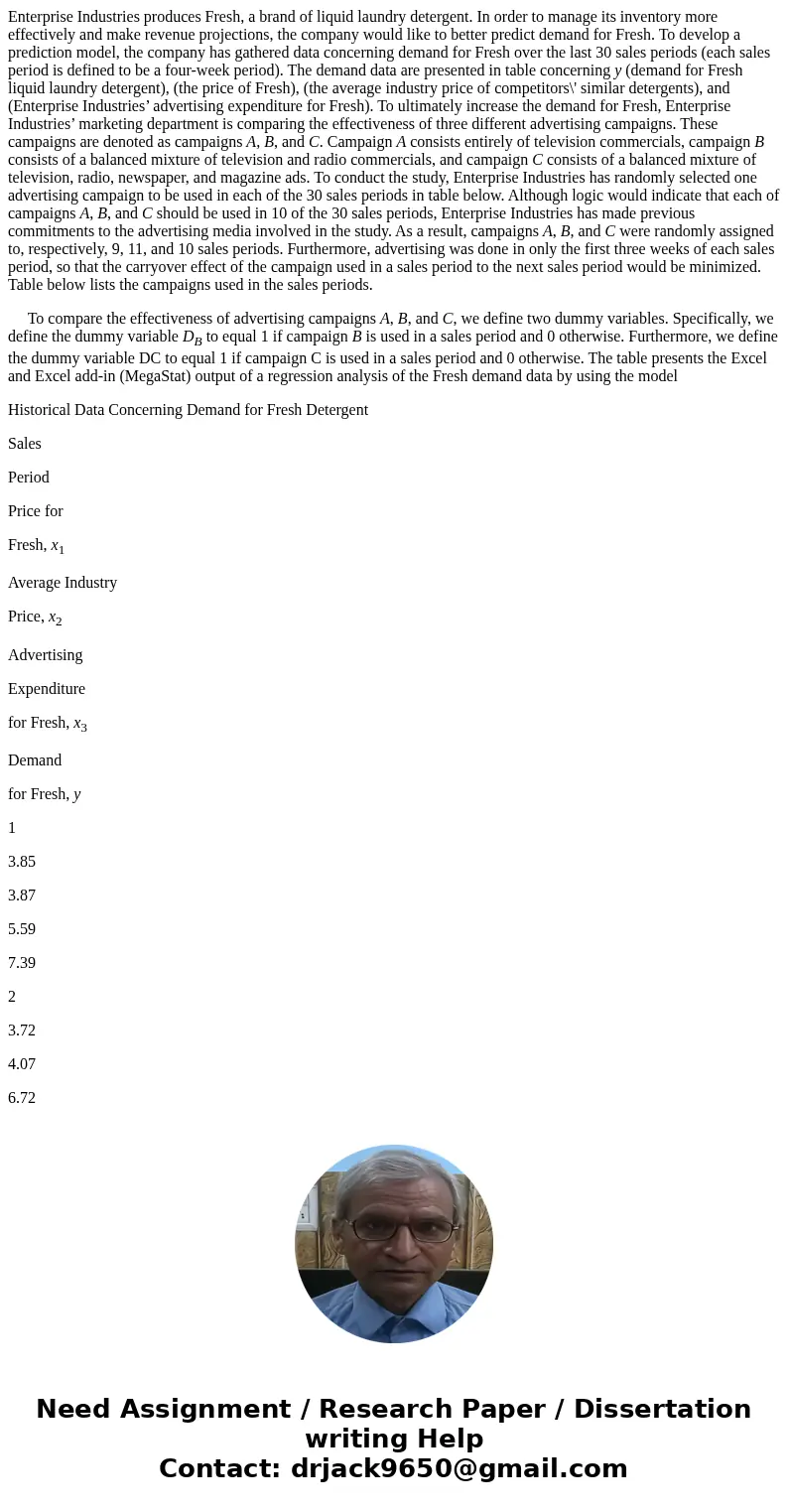
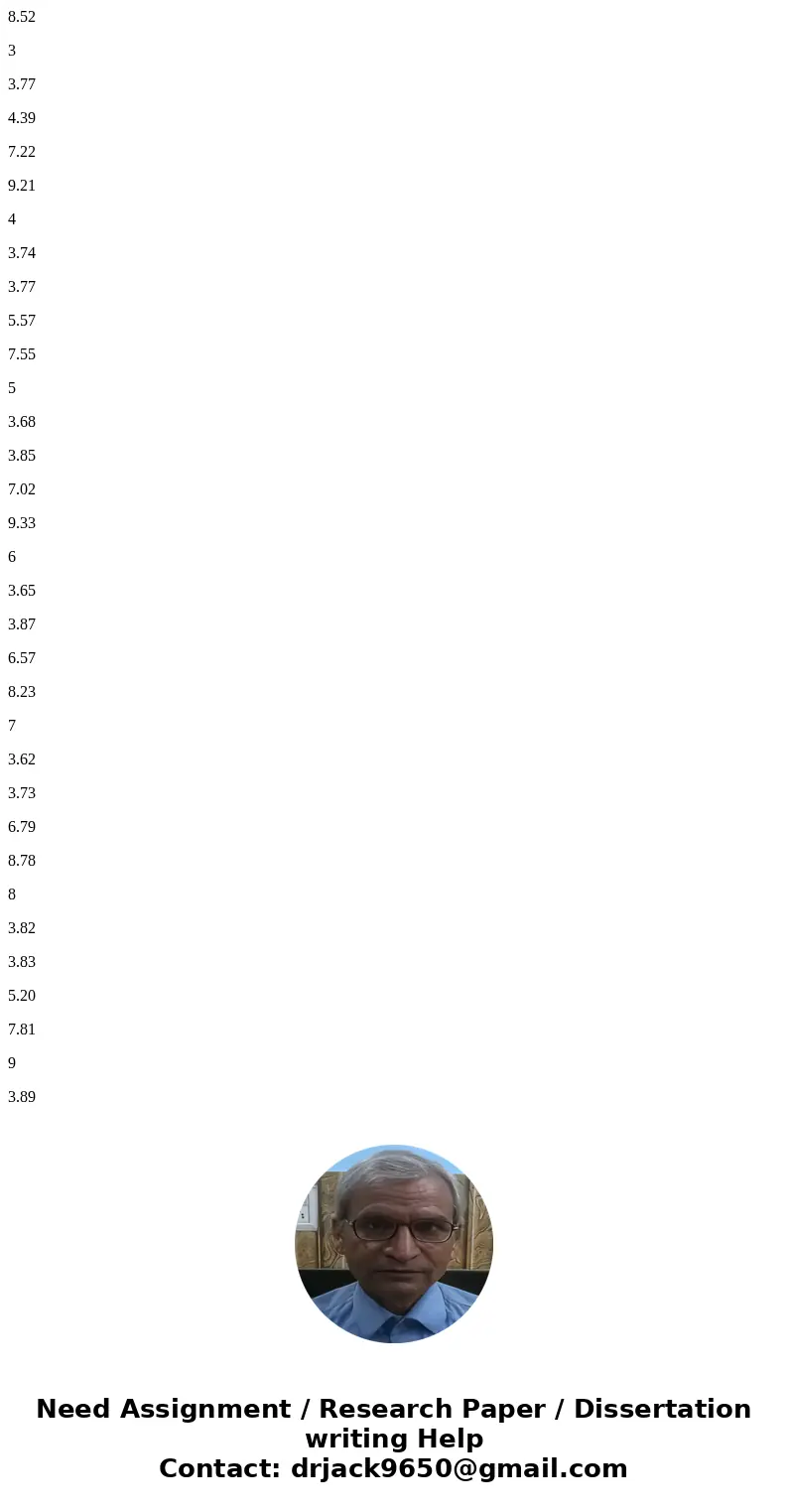
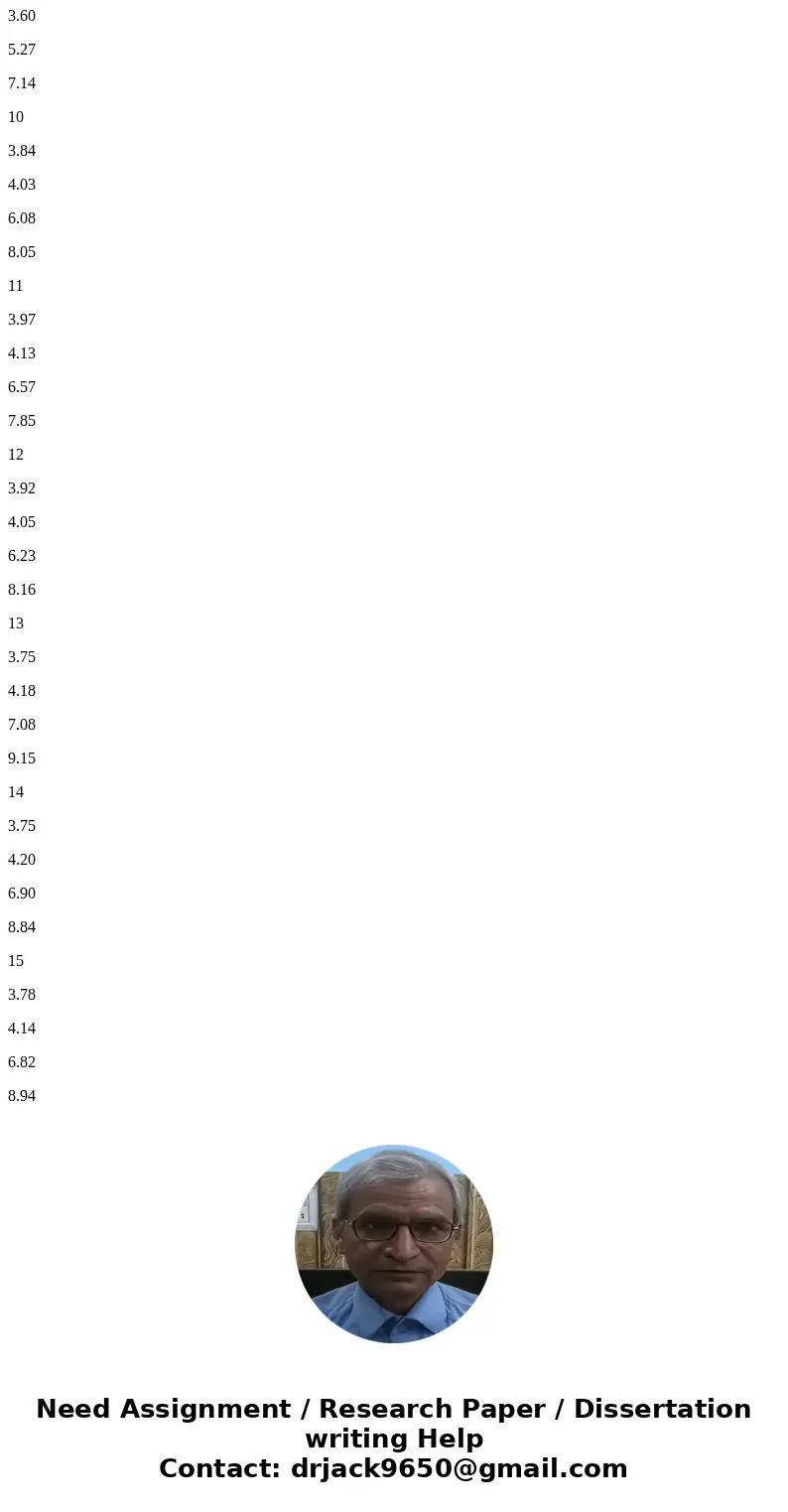
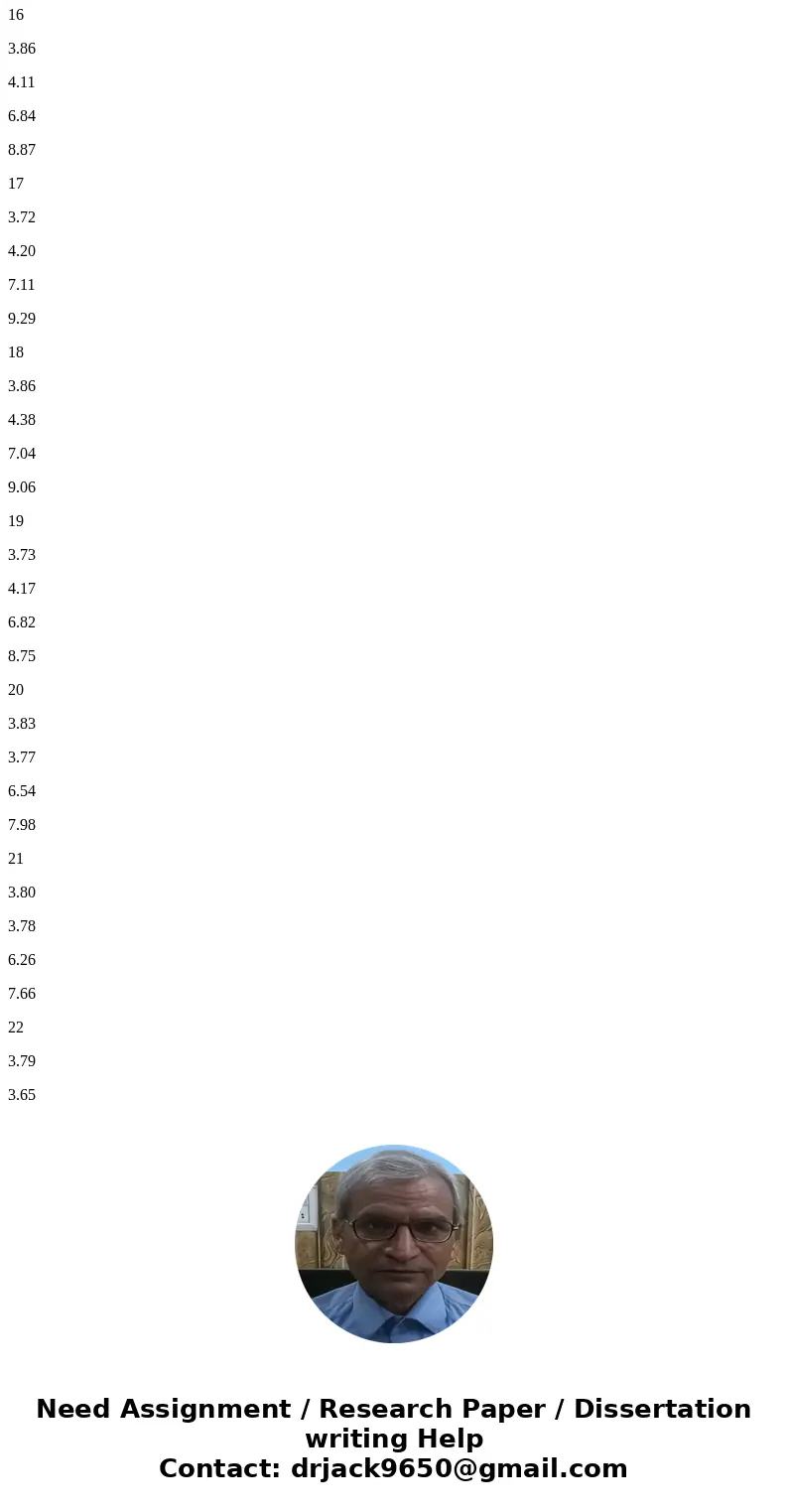
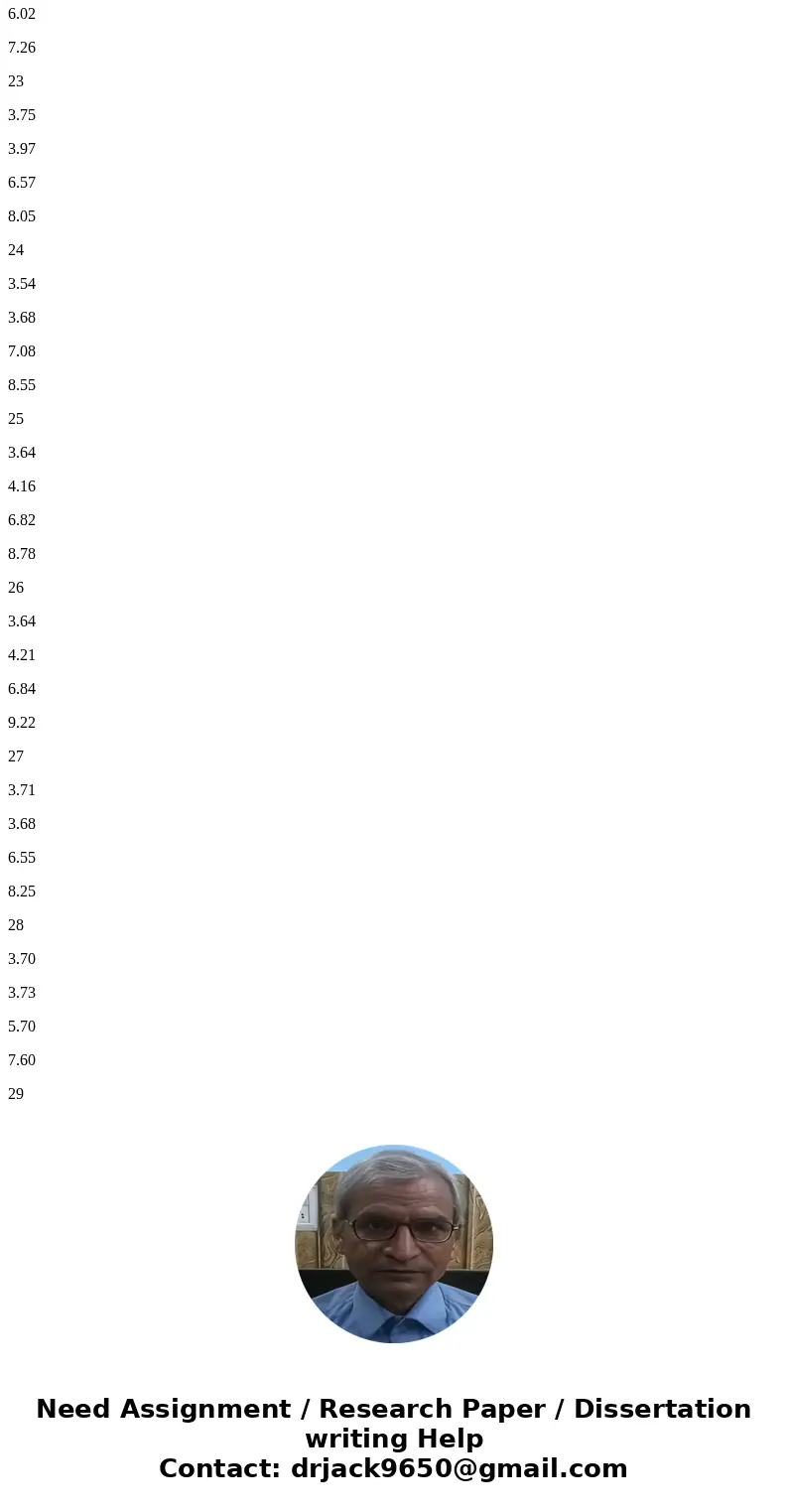
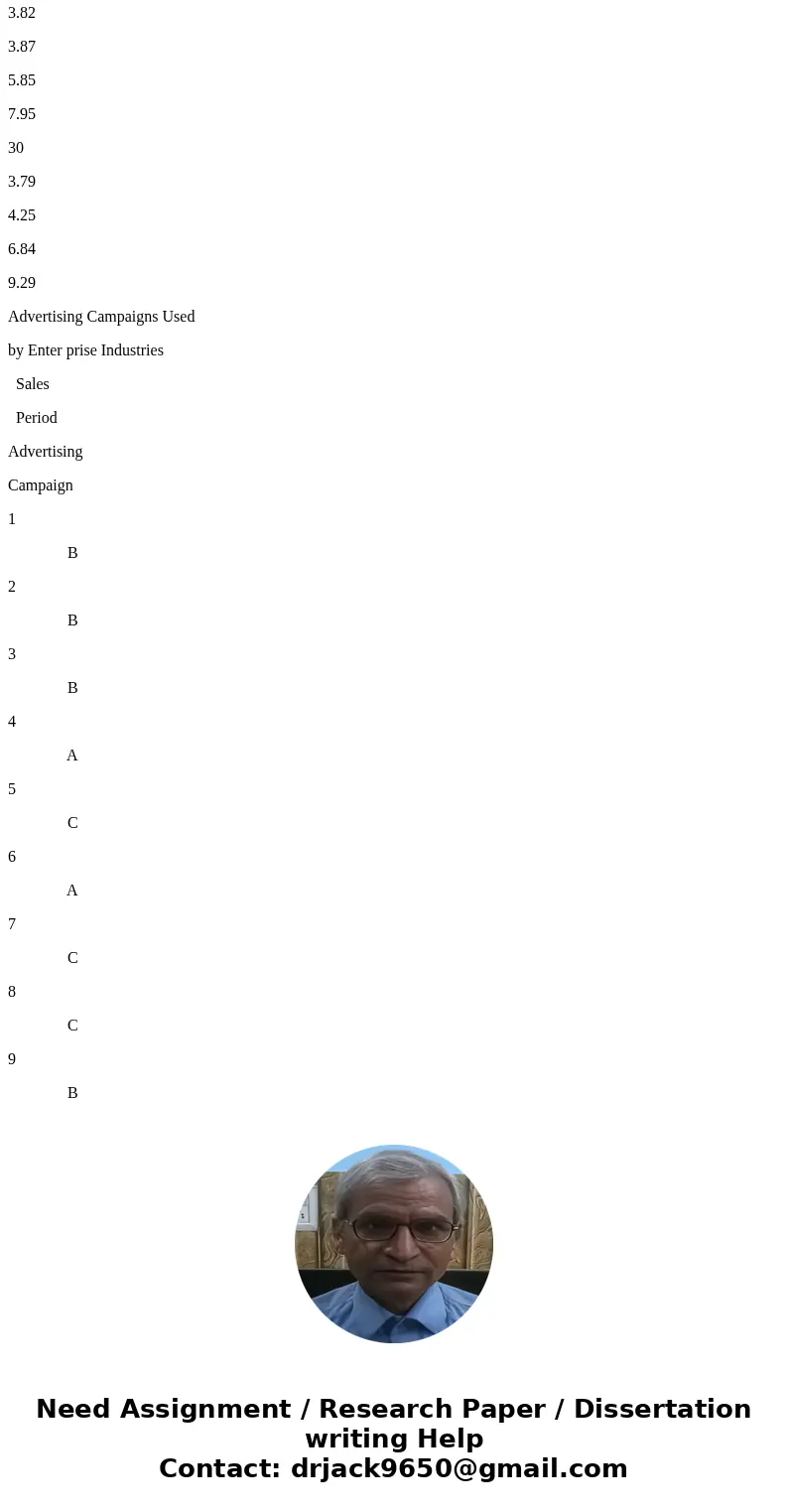
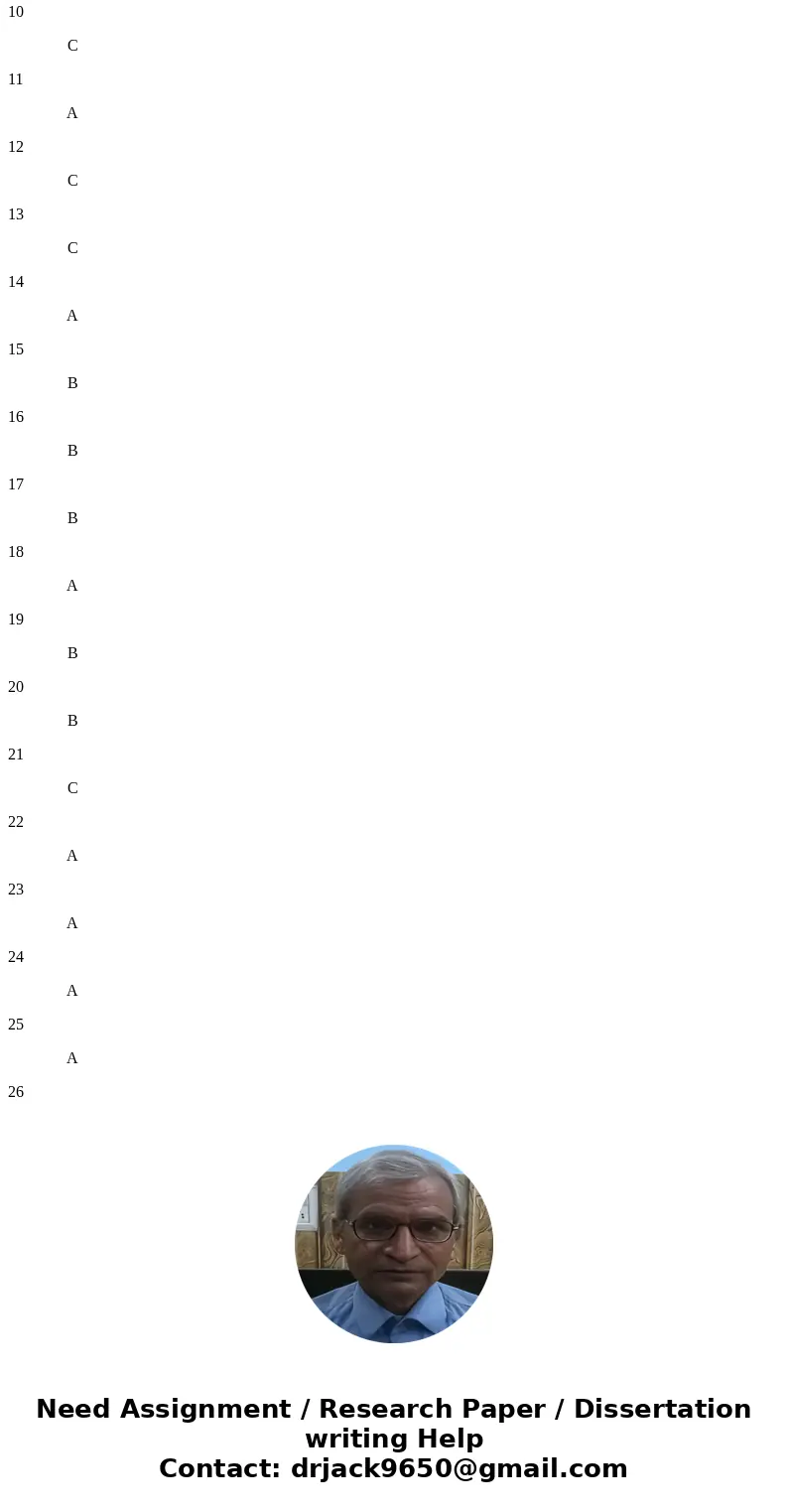
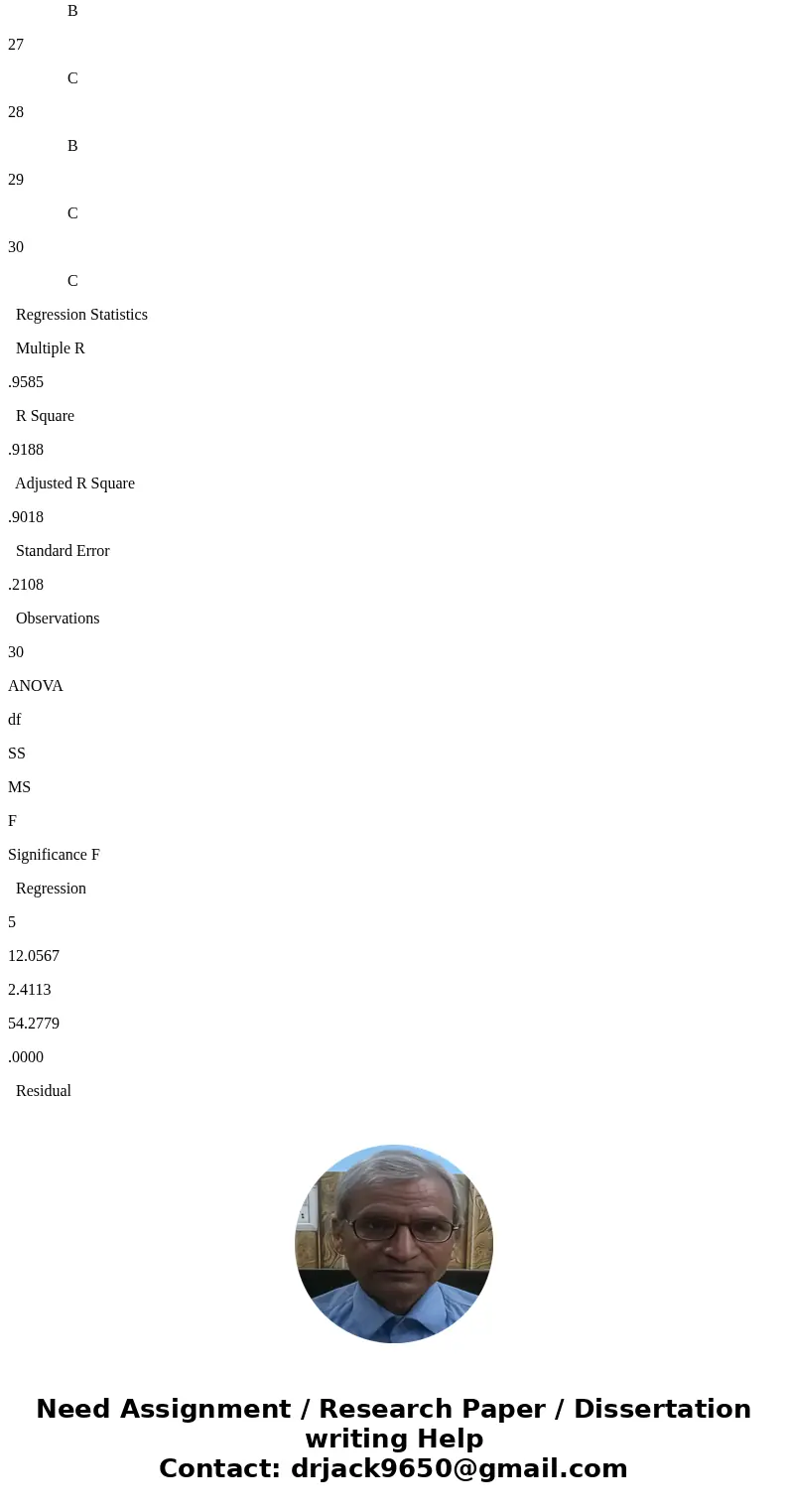
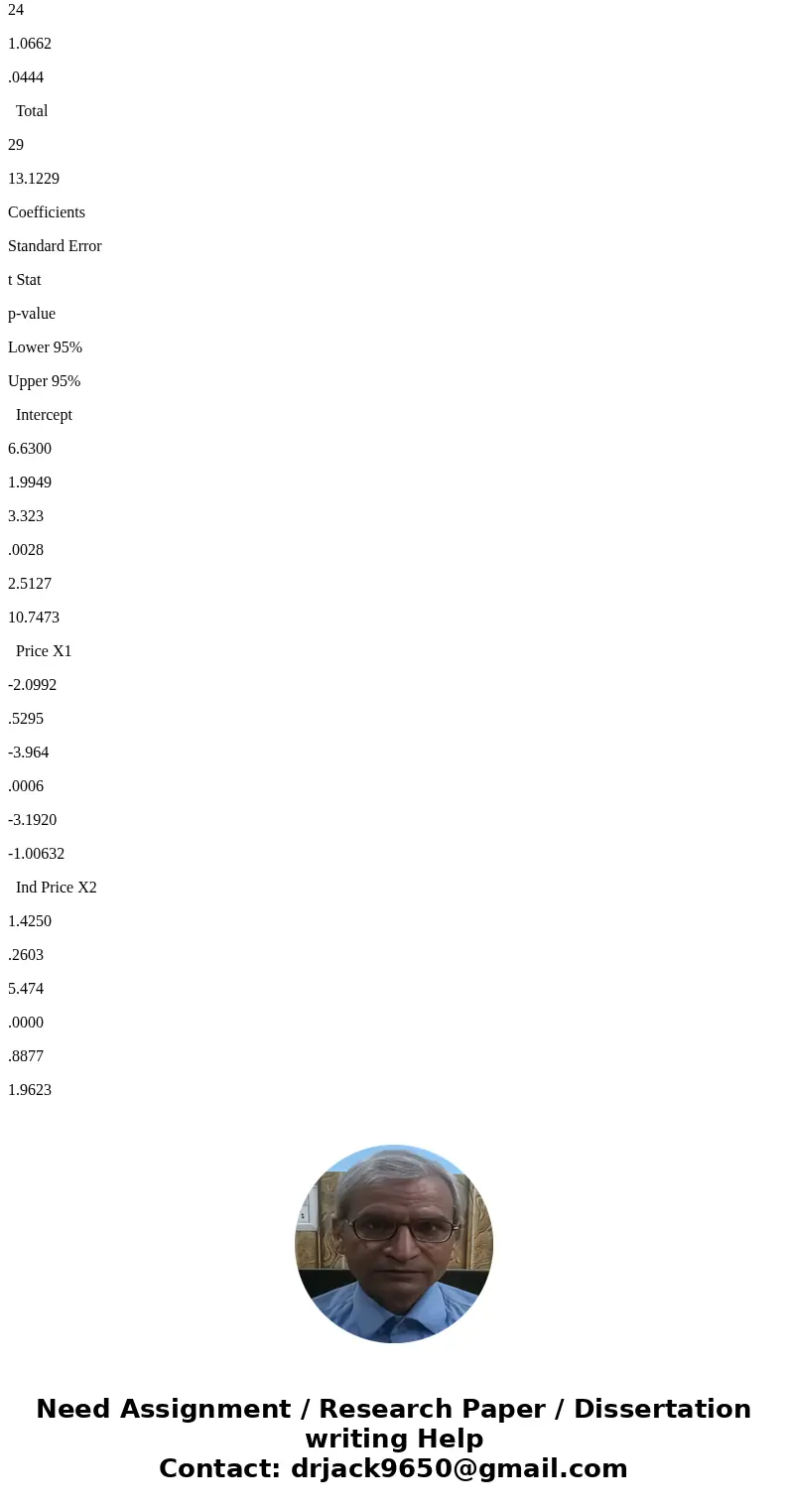
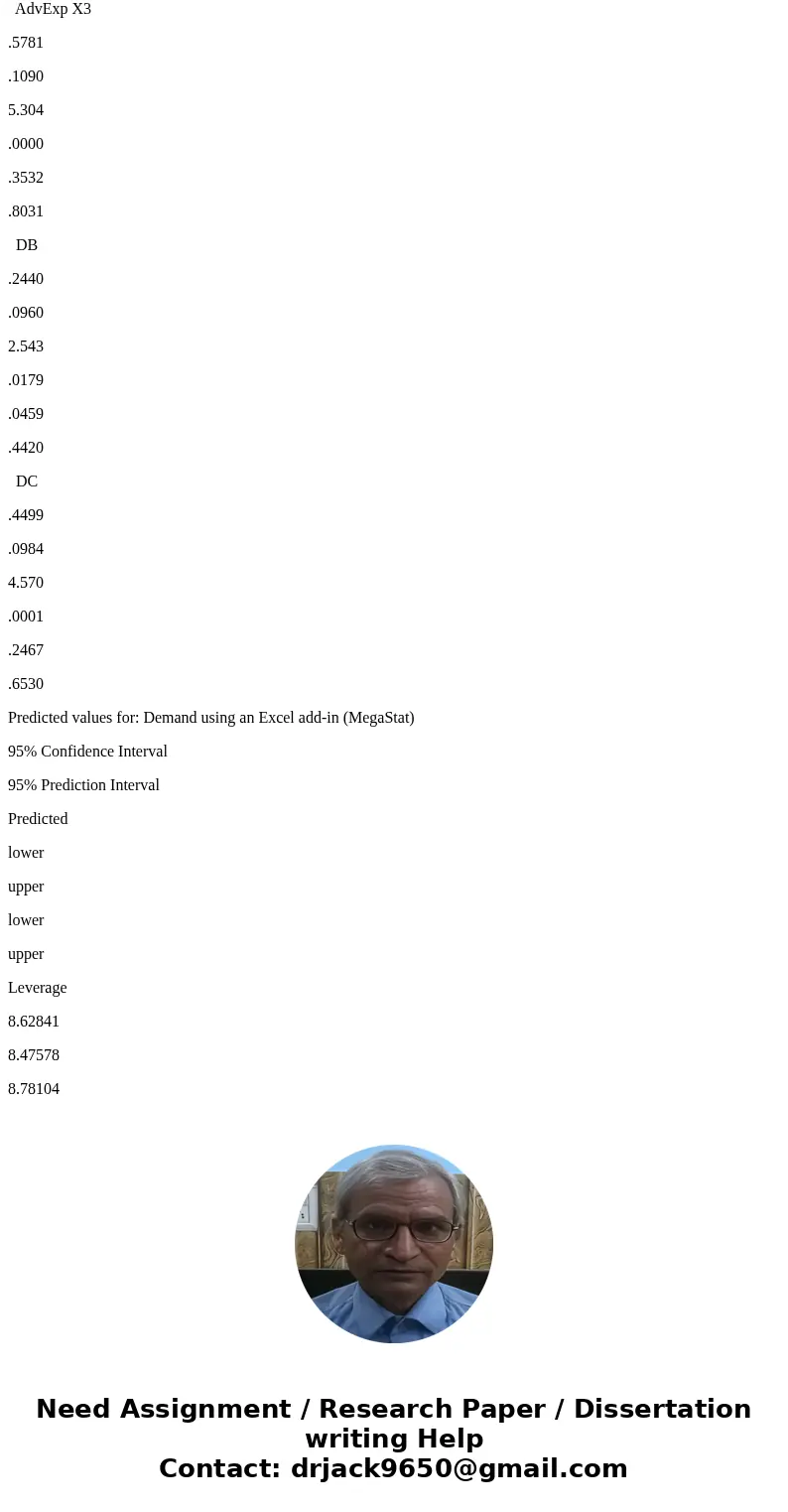
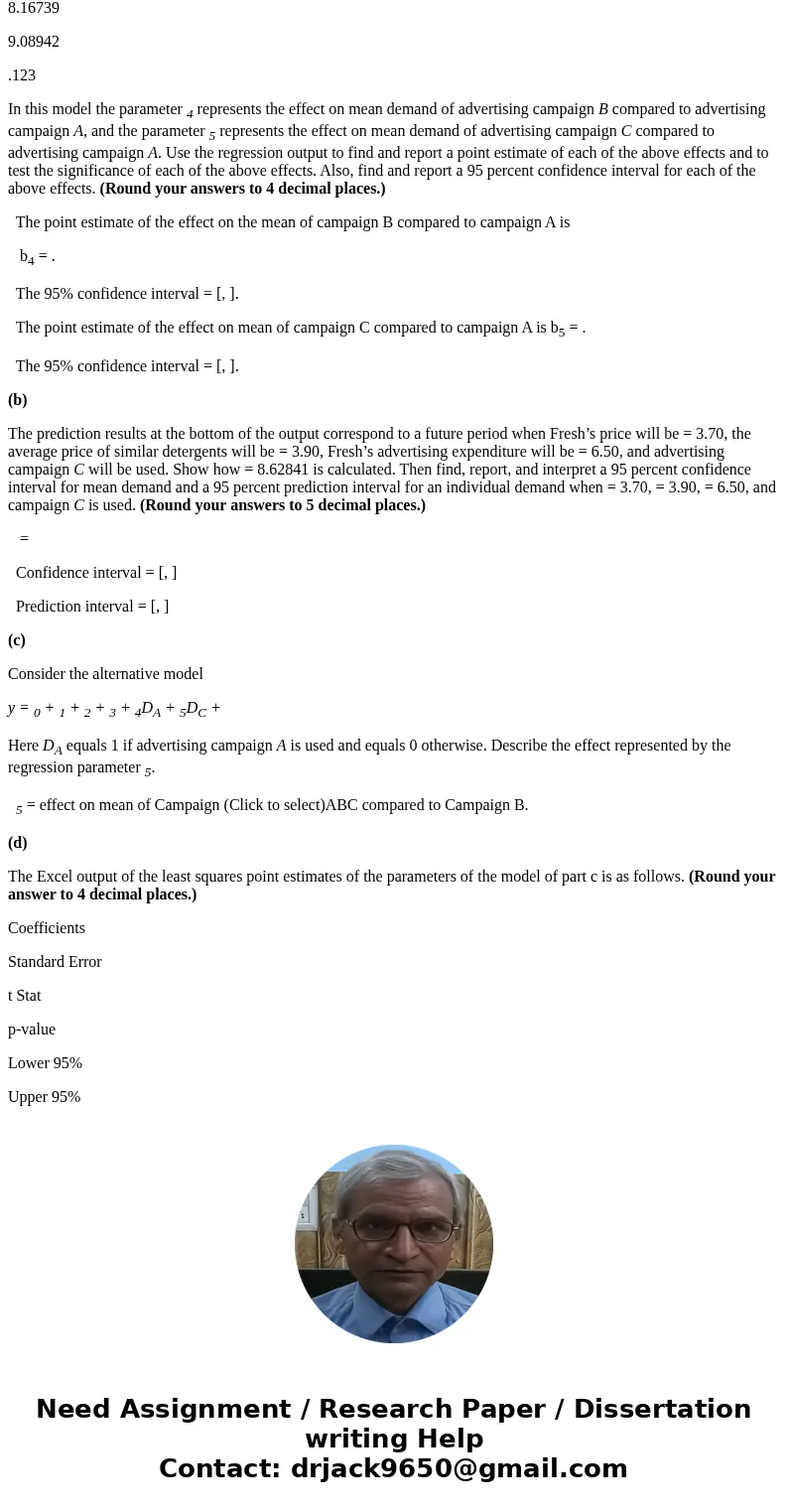
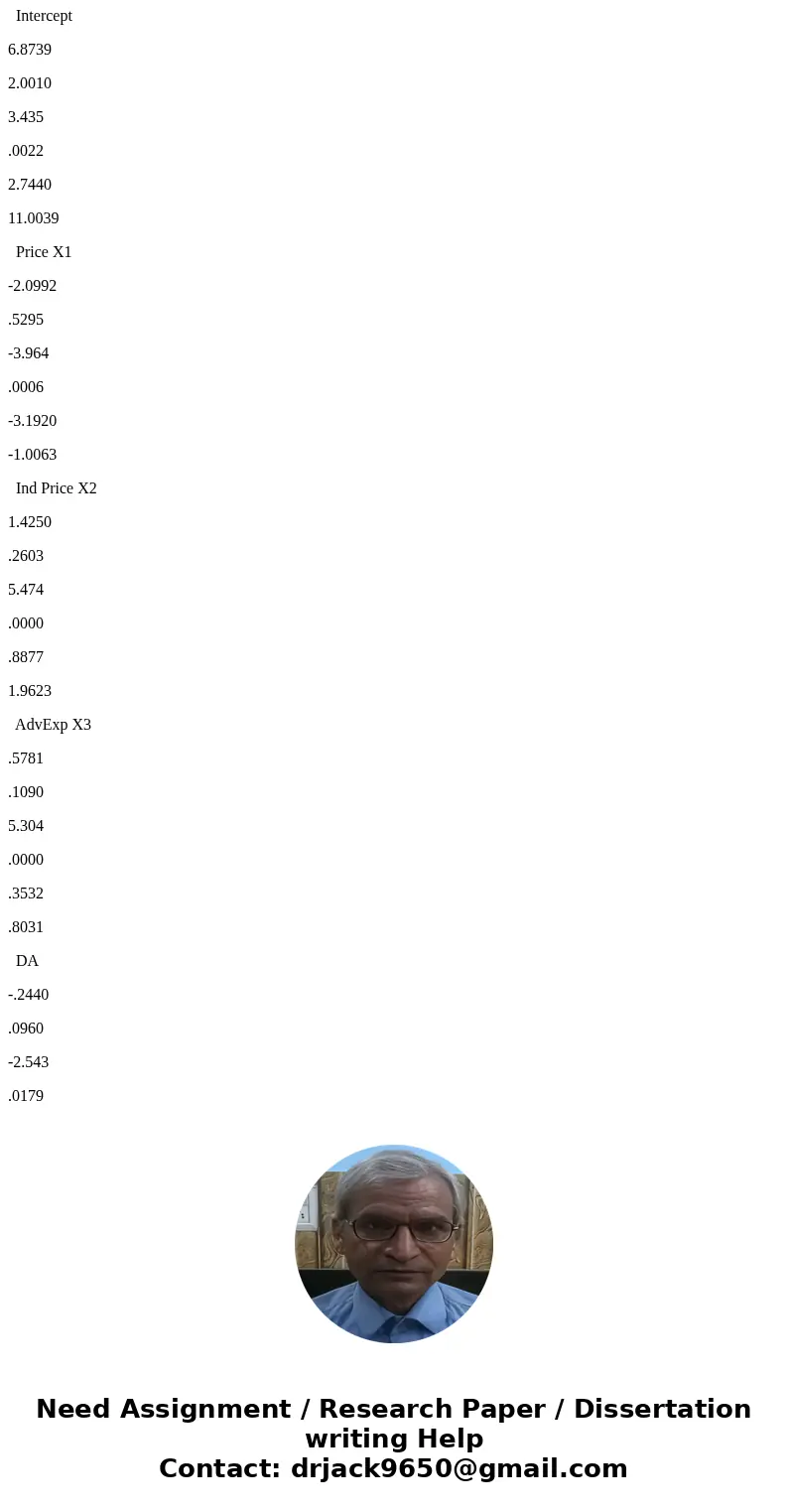
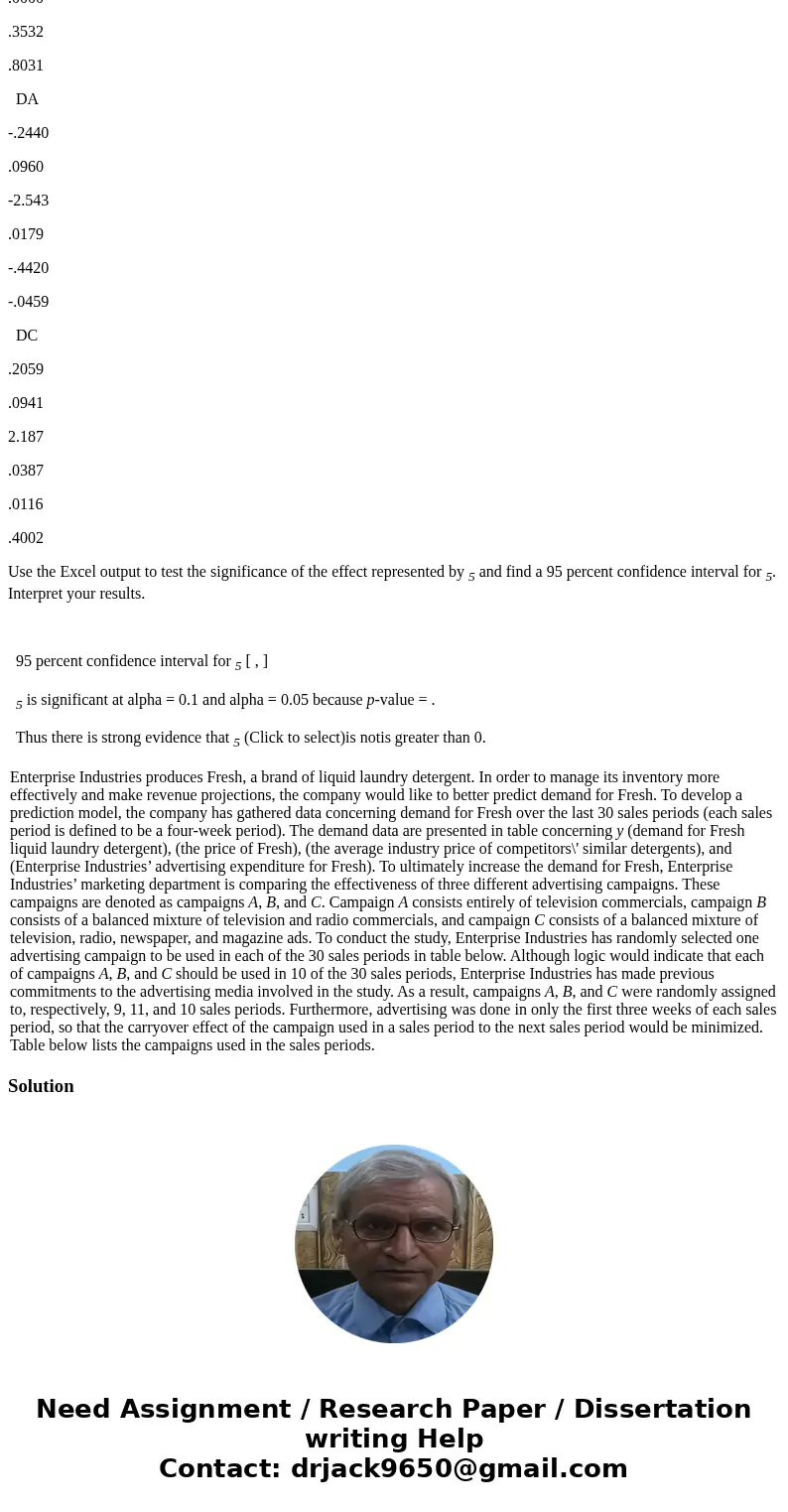
 Homework Sourse
Homework Sourse